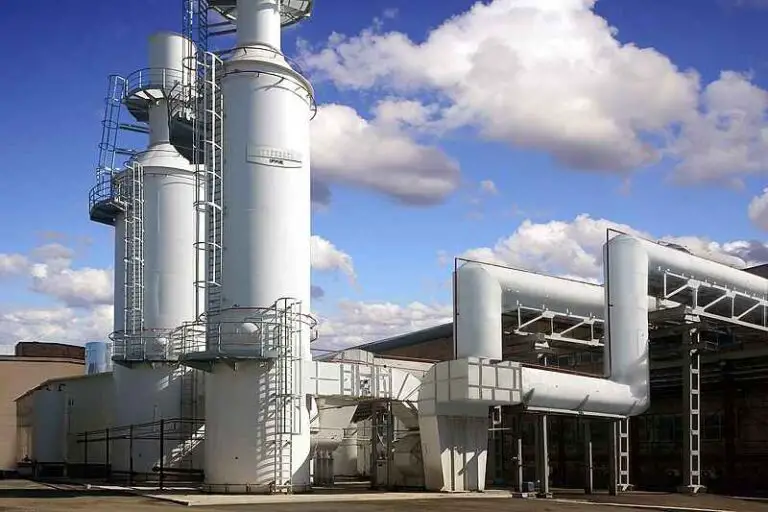Geothermal Energy Definition, Benefits, Disadvantages, Types, Uses
Geothermal energy is heat from the interior of the Earth, produced by radioactive decay and transmitted by rocks and fluids. This article discusses geothermal energy definition, working principle, importance, benefits, disadvantages, types and uses, as outlined below;
-Geothermal Energy Definition: 6 Ways to Define Geothermal Energy
-How Geothermal Energy Works: Working Principle of Geothermal Energy
-Importance of Geothermal Energy
-Benefits of Geothermal Energy
-Disadvantages of Geothermal Energy
Geothermal Energy Definition: 6 Ways to Define Geothermal Energy
Geothermal energy is thermal energy that is produced in and extracted from the subsurface of the Earth.
The above is a very basic geothermal energy definition, which highlights the most essential attributes of this type of energy.
Another important consideration which must be made when discussing geothermal energy is that it is renewable. The following geothermal energy definition portrays it within the context of renewable availability, and sustainability;
Geothermal energy is a thermal form of renewable energy that comes from the interior of the Earth, and which is useful toward sustainable development and energy transition, as an alternative to non-renewable energy resources like fossil fuels [6].
Below is an alternative geothermal energy definition that mentions some sources of geothermal energy;
Geothermal energy is renewable heat energy derived from radioactive decay that conducts the heat to natural sources like; subsurface hydrothermal vents, geysers, magma, dry subsurface rocks, mud vents and hot springs [2].
The main source of geothermal energy is radioactive decay, whereby naturally-occurring isotopes like Uranium in the Earth's interior undergo spontaneous nuclear disintegration to release large amounts of energy in the form of heat.
What this implies is that nuclear energy is the primary source of geothermal energy, in the same manner as it is the primary source of solar energy that powers the entire ecosystem.
The alternative geothermal energy definition mentions some examples of geothermal energy mechanisms;
Geothermal energy is a type of energy from radioactive decay in the subsurface, whose propagative examples are; solid-state conduction, hydrothermal convection, and dimorphic retention.
Some uses of geothermal energy are listed in the geothermal energy definition below;
Geothermal energy is heat generated in the Earth's interior, which can be harnessed for various purposes like; heating and cooling, electricity generation, food processing, and sustainable farming, among others [5].
The two main uses of geothermal energy are heating and electricity generation.
The most common use of geothermal energy is heating, because it is derived directly in the form of heat, and may not always have sufficient energy-density to be used to drive a steam turbine without support from auxiliary energy resources like fossil fuels.
Lastly, the geothermal energy definition is outlined to include some types of geothermal energy, as follows;
Geothermal energy is a renewable and sustainable form of thermal energy from the subsurface of the Earth, which may be any of three types including rock-derived, magma-derived, and water-derived geothermal energy.
How Geothermal Energy Works: Working Principle of Geothermal Energy
Geothermal energy works by a three-step process of radioactive decay, heat transfer and energy extraction. These three steps make up the working principle of geothermal energy, and are discussed below;
1). Radioactive Decay (in explanation of How Geothermal Energy Works)
The original source of geothermal energy is nuclear radioisotopes like thorium, potassium and uranium.
These radioisotopes occur naturally in the core of the Earth, where they undergo spontaneous chain reactions and emit large quantities of heat.
The radioactive decay of isotopes in the Earth's core leads to a phenomenon referred to as the geothermal gradient, whereby subsurface heat increases with depth [3].
Nuclear processes produce geothermal energy, which can be harnessed after it is transferred to other subsurface materials.

2). Heat Transfer
Heat transfer is the second stage in the working principle of geothermal energy.
The mechanisms of geothermal heat transfer are radiation, conduction, and convection.
In any given scenario, multiple mechanisms can transfer heat from subsurface nuclear reactions to other subsurface materials. The particular mechanisms used depend on the available materials, the amount of heat involved, and the spatial conditions of the subsurface.
For example, radioactive decay in the subsurface can produce geothermal heat, which is transferred to solid rocks through the mechanism of conduction, and as the rocks transform to semi-solid and liquid states, the resulting magma may transfer geothermal heat through convection, to hydrothermal fluids, and so on.
3). Energy Extraction (in explanation of How Geothermal Energy Works)
Energy extraction is the final stage in the working principle of geothermal energy, and it signifies the harnessing of this type of energy.
Geothermal energy is harnessed by first extracting it from the Earth's interior, and either directly using it as heat, or converting it to a preferred form such as mechanical energy.
Systems and mechanisms for geothermal energy extraction include heat pumps and resilient superconductors like graphene [1].
As mentioned earlier, after extraction, geothermal energy is either used for heating and cooling, or converted to mechanical energy in order that it may be used to generate electricity.
In some cases, geothermal heat reaches the surface naturally in hot springs and other thermal vents.
Such natural extraction processes are however prone to major energy losses, and do not collectively represent an energy efficient mechanism of geothermal energy extraction.
Importance of Geothermal Energy
The importance of geothermal energy comes from its sustainability, abundance, relative-reliability, and multipurpose application.
Geothermal energy is sustainable because it has no carbon footprint, and the water vapor that is released as it is harnessed only makes up part of the natural hydrological cycle, and does not necessarily act as a greenhouse gas.
In addition to its negligible carbon footprint, geothermal energy also is not associated with any significant releases of toxic gases like SO2 that can contribute to air pollution and acid rain formation [4].
As a sustainable energy form, geothermal energy can play a key role in the development of green economies, sustainable manufacturing and other concepts or practices aimed at protecting the ecosystem.
Along with other renewable energy forms like solar and wind, geothermal energy is useful in the effort to mitigate resource depletion, while being more reliable than these forms in terms of predicting its accessibility and quantity.
The multipurpose application and simplicity of geothermal energy makes it a flexible option, so that integrated power plants and heat pump-systems can be designed for effective harnessing.
Benefits of Geothermal Energy
Advantages or benefits of geothermal energy are;
1). Low cost
2). Abundance and reliability
3). Simplicity of extraction and conversion
4). Minimal environmental impact
5). Low maintenance requirement
Disadvantages of Geothermal Energy
Disadvantages of geothermal energy are;
1). Geographic limitation of power plants to geothermally-active zones
2). Capital costs
3). Increased seismic hazard risk, like earthquakes
4). Land intensiveness
5). Susceptibility to heat energy losses
6). Risk of toxic gas and radioactive pollution
Types of Geothermal Energy
Types of geothermal energy are;
1). Rock-derived geothermal energy
2). Magma-derived geothermal energy
3). Water-derived geothermal energy
Uses of Geothermal Energy
Uses of geothermal energy are;
1). Space heating and cooling
2). Domestic water heating
3). Electricity generation
4). Food processing (by dehydration)
5). Snow-melting on pavements

Conclusion
Geothermal energy is a form of renewable energy that occurs as heat from subsurface radioactive reactions, and can be extracted after it is transferred to rocks and fluids in the Earth's interior.
Geothermal energy works by a three-step mechanism or process comprising of;
1. Radioactive Decay
2. Heat Transfer
3. Energy Extraction
Geothermal energy is important because it is renewable, relatively abundant, reliable, easy to harness and flexible in application.
Advantages or benefits of geothermal energy are; low cost, abundance, reliability, simplicity of extraction and conversion, minimal environmental impact, and low maintenance requirement.
Disadvantages of geothermal energy are; geographic limitation, capital cost, earthquake hazard risk, land intensiveness, energy loss-susceptibility, and risk of toxic and radioactive pollution.
Types of geothermal energy are; rock-derived, magma-derived and water-derived geothermal energy forms.
Uses of geothermal energy are; space heating and cooling, domestic water heating, electricity generation, food processing, and snow-melting.
References
1). Ahmed, A.A.; Assadi, M.; Kalantar, A.; Sliwa, T.; Sapińska-Śliwa, A. (2022). "A Critical Review on the Use of Shallow Geothermal Energy Systems for Heating and Cooling Purposes." Energies 15(12):4281. Available at: https://doi.org/10.3390/en15124281. (Accessed 26 January 2023).
2). Heasler, H.; Jaworowski, C.; Foley, D. (2009). "Geothermal systems and monitoring hydrothermal features." Available at: https://pubs.geoscienceworld.org/books/book/799/chapter-abstract/3907173/Geothermal-systems-and-monitoring-hydrothermal?redirectedFrom=fulltext. (Accessed 26 January 2023).
3). Jeong, C.; Lee, Y.; Lee, Y.; Ahn, S.; Nagao, K. (2022). "Geochemical Composition, Source and Geothermometry of Thermal Water in the Bugok Area, South Korea." Water 14(19):3008. Available at: https://doi.org/10.3390/w14193008. (Accessed 26 January 2023).
4). Kömürcü, M. İ.; Akpinar, A. (2009). "Importance of geothermal energy and its environmental effects in Turkey." Renewable Energy 34(6):1611-1615. Available at: https://doi.org/10.1016/j.renene.2008.11.012. (Accessed 26 January 2023).
5). Roumi, S.; Yousefi, H.; Noorollahi, Y.; Bekhrad, K.; Zarrouk, S. J. (2017). "Direct Applications of Geothermal Energy; Economic and Environmental Assessment: Meshkin-Shahr, Iran." PROCEEDINGS, 42nd Workshop on Geothermal Reservoir Engineering Stanford University, Stanford, California. (Accessed 26 January 2023).
6). Yudha, S. W.; Tjahjono, B.; Longhurst, P. (2022). "Sustainable Transition from Fossil Fuel to Geothermal Energy: A Multi-Level Perspective Approach." Energies, MDPI, vol. 15(19), pages 1-22, October. Available at: https://ideas.repec.org/a/gam/jeners/v15y2022i19p7435-d937949.html. (Accessed 26 January 2023).


